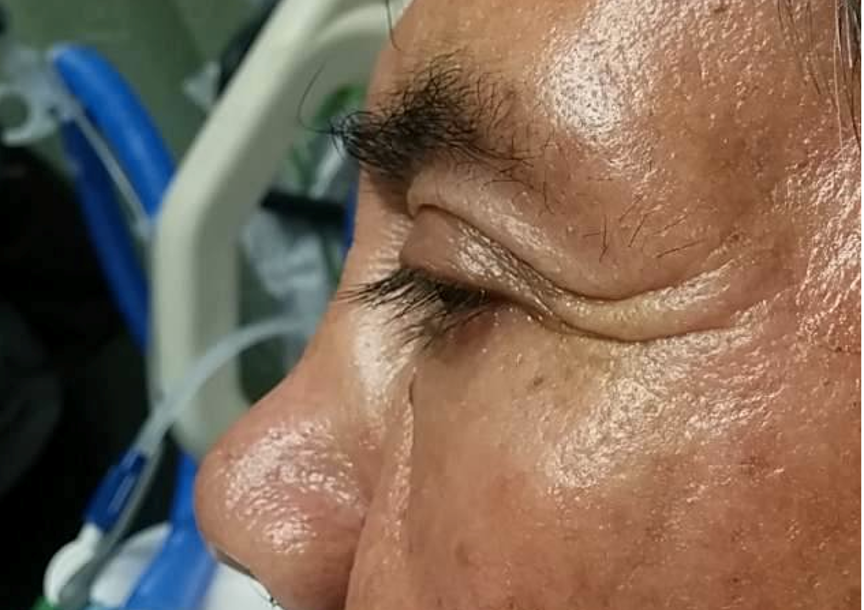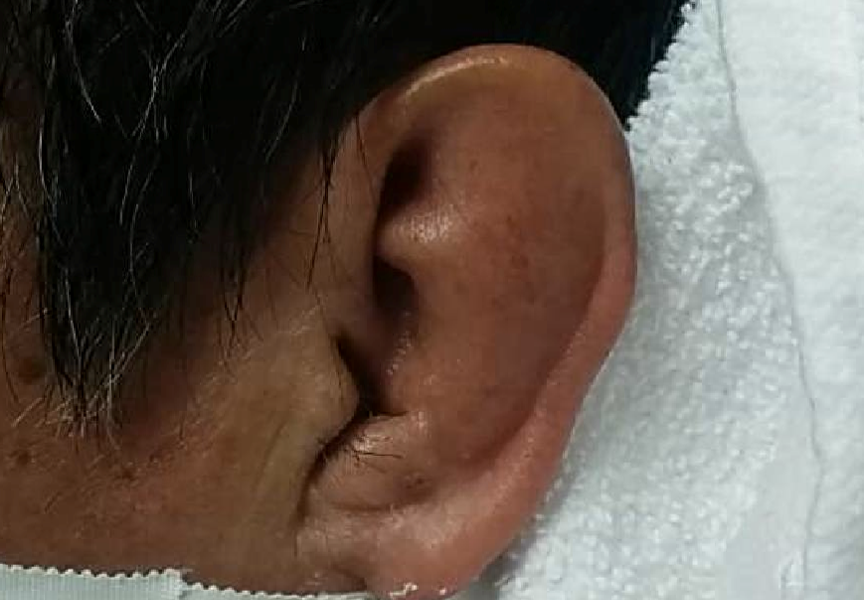Case Presentation: A 69-year-old man with a history of tobacco use and chronic cough presented with worsening productive cough and shortness of breath. He was found to have a right lower lobe consolidation on chest x-ray and leukocytosis of 27,000 white blood cells per microliter concerning for community-acquired pneumonia. Vital signs were initially normal, and exam was notable for right lower lobe crackles. Despite treatment with appropriate antibiotics, the patient developed hypoxemia with increased work of breathing. He was intubated for acute hypoxemic respiratory failure and antibiotics were broadened. Respiratory status improved, and he was extubated two days later. After extubation, he was noted to have copious mucopurulent secretions requiring suctioning every hour, and he required reintubation after progressively becoming hypoxemic again. Bronchoscopic evaluation showed excessive dynamic airway collapse consistent with severe tracheobronchomalacia. On more detailed examination, patient was found to have stigmata of relapsing polychondritis including a saddle-nose deformity and evidence of ear cartilage involvement. He was started on prednisone and then underwent successful extubation.
Discussion: Relapsing polychondritis is a rare systemic immune-mediated disease that causes inflammation and destruction of cartilage, particularly in the organs of special sense. Large airway disease may also occur with nonspecific symptoms such as cough, shortness of breath, excessive secretions, and stridor. Patients are often misdiagnosed with emphysema or asthma given the difficulty to discern between similar disease presentations as well as findings of obstruction on pulmonary function testing. As patients are often undiagnosed for a prolonged period, large airway disease may progress to tracheobronchomalacia. In these cases, destruction of cartilage causes hyperdynamic airway collapse and can lead to high mortality. Thus, physicians must maintain a high index of suspicion for tracheobronchomalacia and relapsing polychondritis in patients with unexplained extubation failure.
Conclusions: Relapsing polychondritis presents with subtle manifestations leading to frequent misdiagnosis. Delayed diagnosis can lead to worsening of cartilaginous destruction in the large airways and life-threatening tracheobronchomalacia. Physicians should have a high index of suspicion for this condition in patients with failed extubation who also manifest signs of cartilage destruction including saddle-nose deformity and auricular inflammation.


